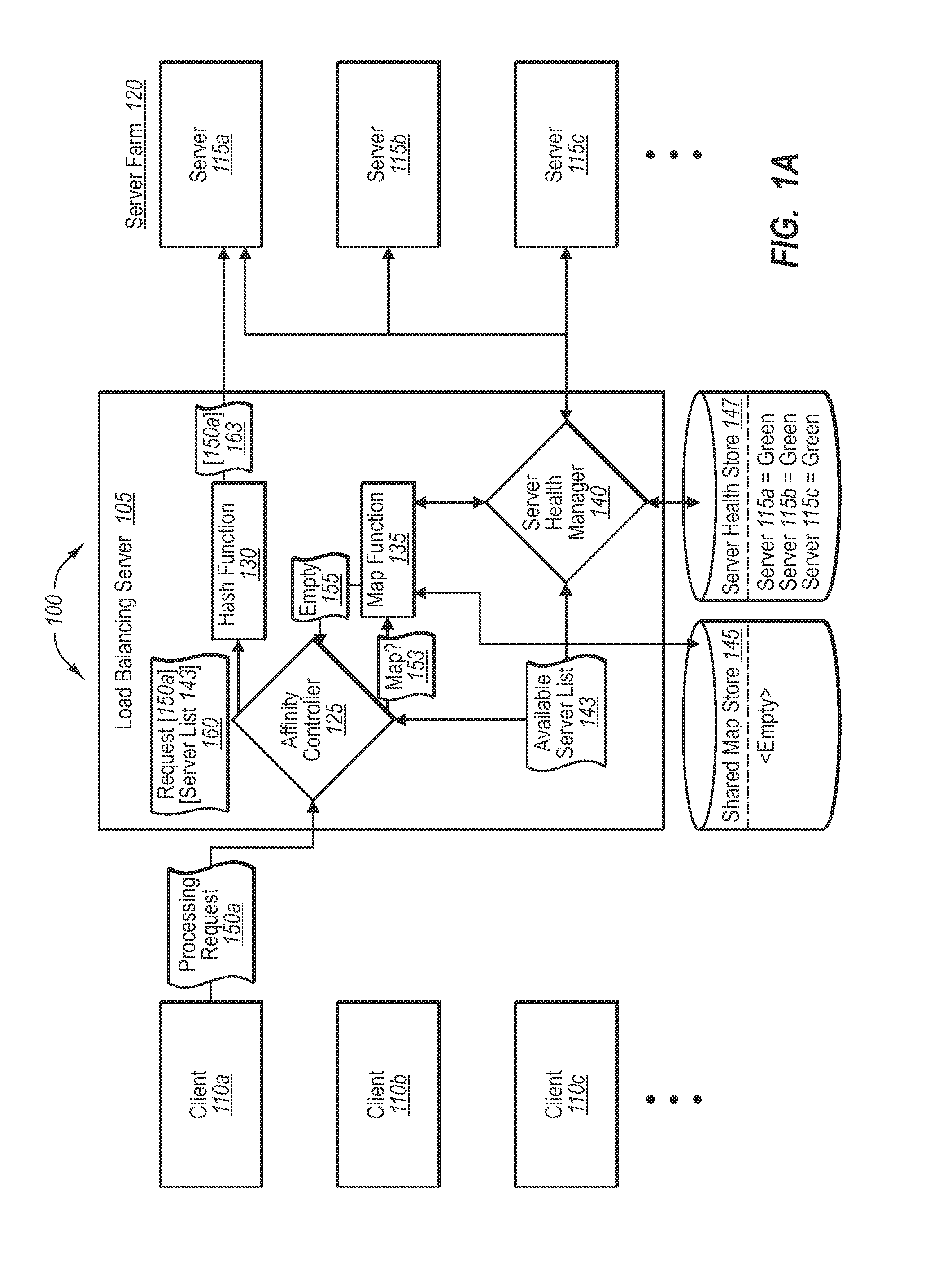Adapting message delivery assignments with hashing and mapping techniques
a message and mapping technology, applied in the field of message delivery assignment adaptation with hashing and mapping techniques, can solve the problems of insufficient single server, computationally expensive maintenance of in-memory data structures, and other difficulties, and achieve the effect of efficient direct or assigning messages
- Summary
- Abstract
- Description
- Claims
- Application Information
AI Technical Summary
Benefits of technology
Problems solved by technology
Method used
Image
Examples
Embodiment Construction
[0022]Implementations of the present invention extend to systems, methods, and computer program products configured to efficiently direct or assign messages associated with a processing request to an appropriate server in a server farm. In at least one implementation, for example, a load balancing server (e.g., load balancing component in the server) uses one or more hashing functions to direct messages associated with a particular processing request to a server in a server farm. When the server farm composition or status changes (e.g., a server goes down, is performing at lower levels, or is added to the farm), the load balancing server uses a map-based function (in lieu of or in addition to the hashing function) to direct messages to working servers. Once identifying depletion of the map, the load balancing server can then direct / assign messages of a processing request to a server in the server farm using the hashing function.
[0023]Accordingly, as will be understood more fully her...
PUM
 Login to View More
Login to View More Abstract
Description
Claims
Application Information
 Login to View More
Login to View More - R&D
- Intellectual Property
- Life Sciences
- Materials
- Tech Scout
- Unparalleled Data Quality
- Higher Quality Content
- 60% Fewer Hallucinations
Browse by: Latest US Patents, China's latest patents, Technical Efficacy Thesaurus, Application Domain, Technology Topic, Popular Technical Reports.
© 2025 PatSnap. All rights reserved.Legal|Privacy policy|Modern Slavery Act Transparency Statement|Sitemap|About US| Contact US: help@patsnap.com



